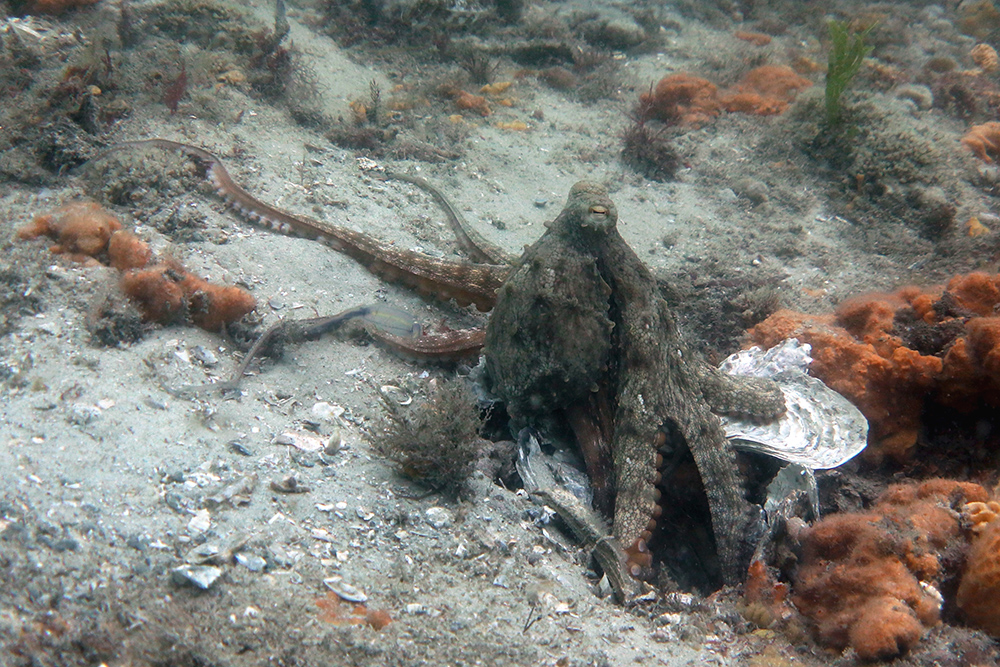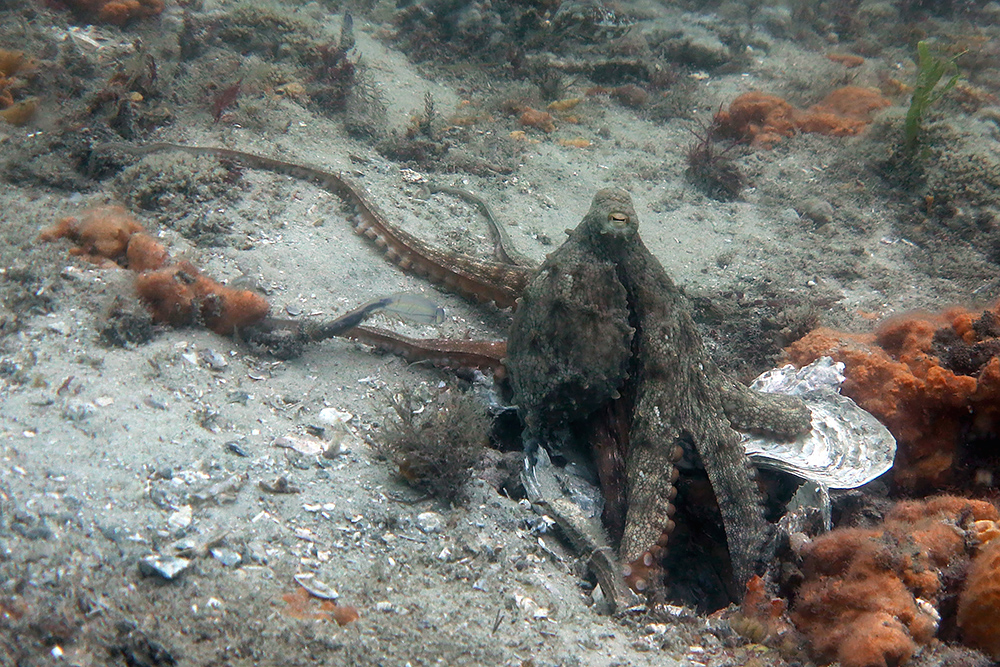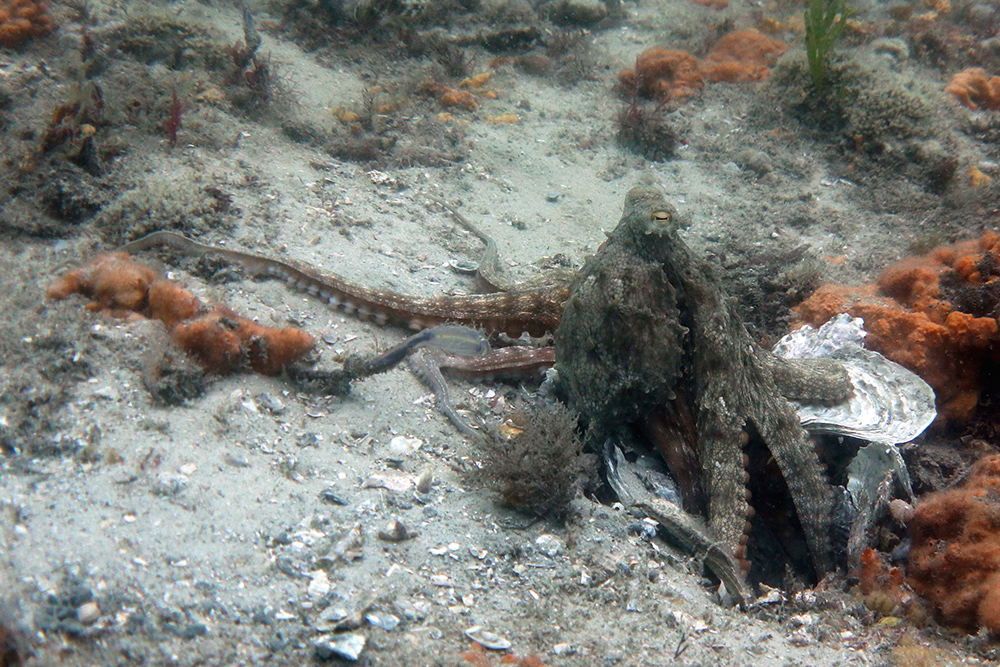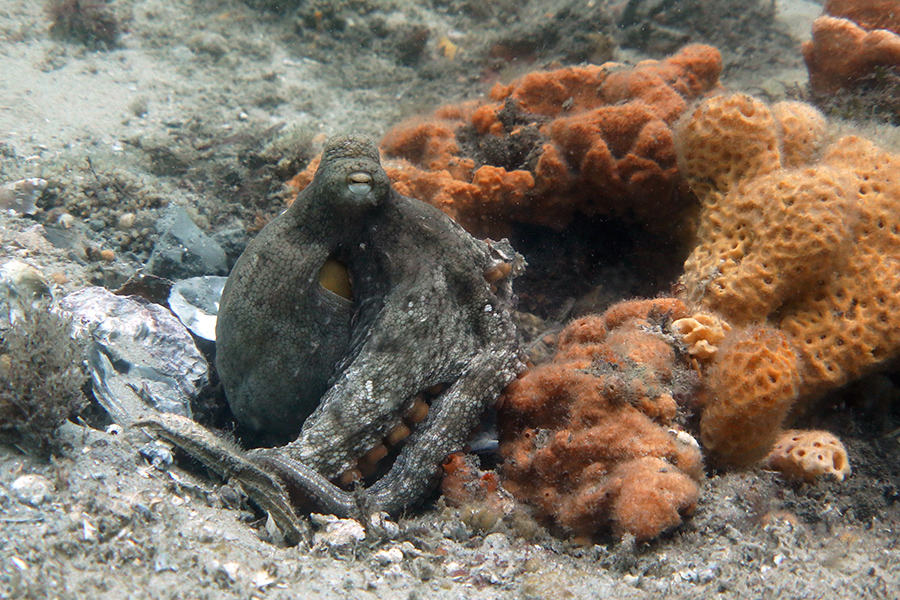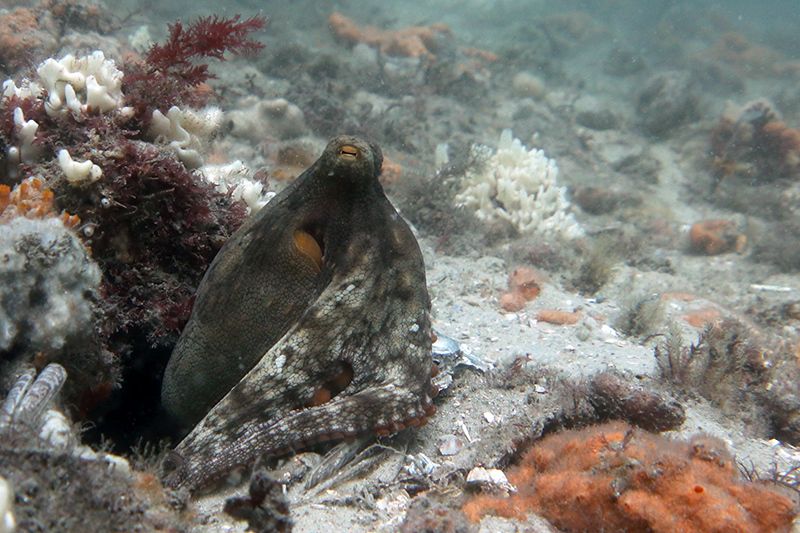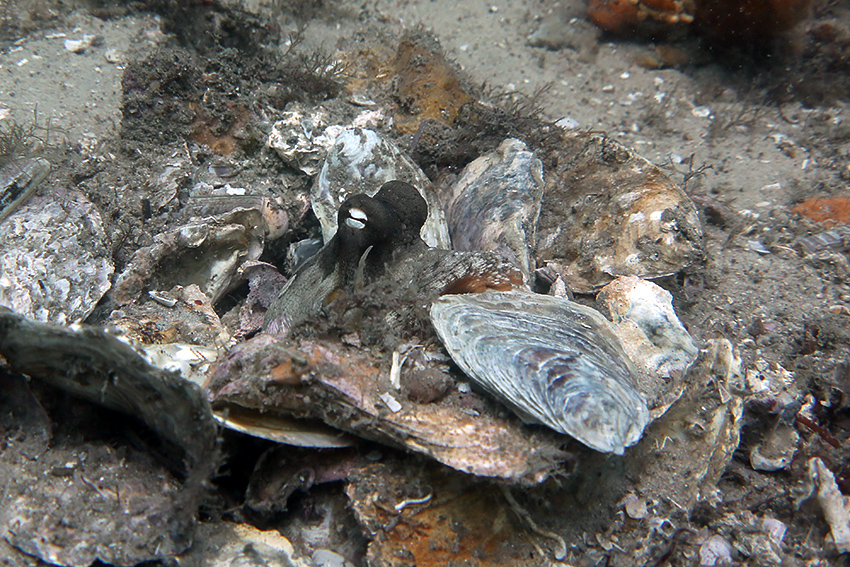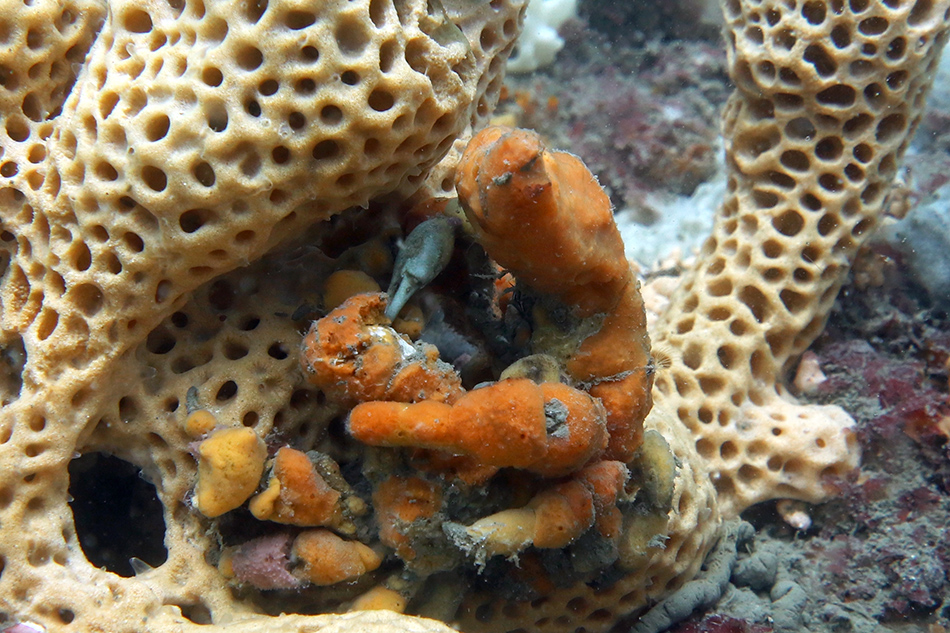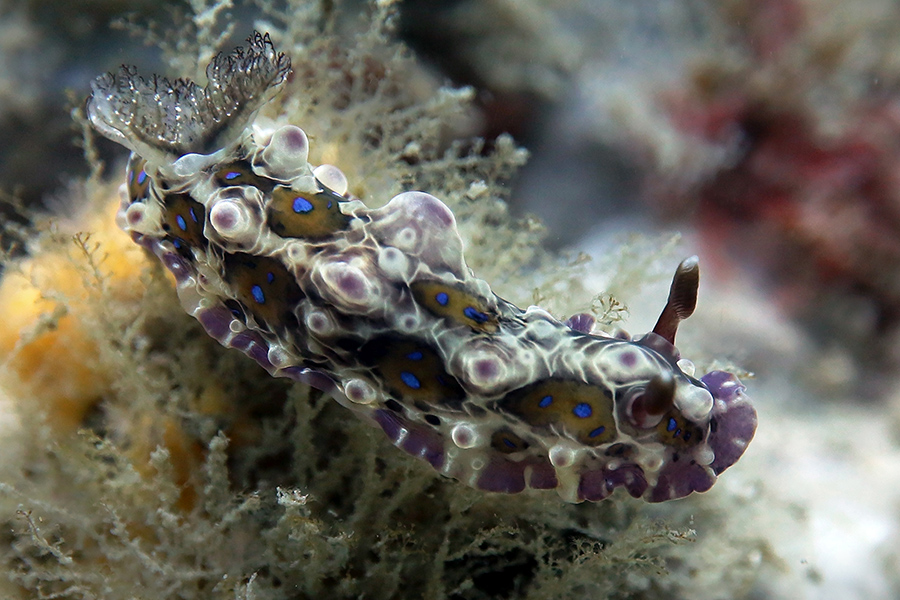This is a continuation of the previous post.
Day 2
On the second day, I went back to the same area (a little east of the Pipeline). This is quite a site now, and I saw a lot of octopuses. I was wandering too much to do a reliable count, but counting photos of clearly distinct individuals, I saw at least 6 (probably more). The area was also full of small cuttlefish, Sepia plangon, hovering watchfully.
The most interesting part of the dive was a sequence of behaviors by one octopus, a medium-to-large and very alert one. I’ll describe this octopus as a “he,” as he sat and surveilled, some of the time, in a way I associate with males.
When I arrived he was down in his den, but soon after (I went away and looked back) he was sitting up quite high at the edge of his den, apparently watching an octopus about 3 meters away. As he sat up, facing one way, three of his arms went out, to the side and mostly behind him. They began exploring very actively, in roughly the opposite direction to the way he was facing, and his body did not reorient at all.
I tried to get video of all this, but had trouble with the video button on my camera housing for some reason. So I just got a series of photos. The sequence includes the photo at the top, which I hope was a little puzzling at first, as it’s not clear which way the octopus is facing. All this is very suggestive in relation to questions about the control of arm movements, especially finer details, in octopuses – whether there is a fair degree of autonomy in the arms, which are packed with neurons, in some circumstances. The octopus is facing one way, apparently quite attentively, while some of his arms wander in other directions.
His arms roamed around, and then… one of them might have been stung or bitten by something. He suddenly retracted the arms and went pale. He went down into his den. I went over and looked down, and he was deep inside, quite pale.
I went back out and hung around, and then he came up from the den, came forward, and did a classic den-cleaning silt throw. A fairly vigorous one (high vigor by the standards of our paper on this behavior). It was in the rough direction of the other octopus, but that octopus was a fair way away, many times further than the range of the throw.
After that, he sat at the edge of the den, facing the same way as before.
Just as I was about to leave, he came out of the den and started rummaging about. But I was low on air, and had to swim quickly in.
—–
A little before this sequence, I watched another octopus on a brief foraging trip, and did get some video. This one’s arms, also, were excellent.
The dive also featured quite a few nudibranchs, Dendrodorus arborescens. Because I was focused on the octopuses and could not stay around, I am not sure whether this one was laying eggs, or eating someone else’s.
Day 3
I went back to the same spot on the third day: again, a lot of octopuses. I don’t have an exact count, but a conservative number would be 8. A notable feature was some close proximity between octopuses in dens, noted at the end of the dive. I saw an area with two occupied dens within about 2 meters, and a third one a little further away. One of them, the largest, seemed to be looking out over the other two.
I didn’t do a map or measurements, but it seemed notable that in this large area, with plenty of den options, there were 3 pretty close. (On my next trip back I took a tape measure, and though I wasn’t measuring these particular distances, I measured a similar den gap to see how my impressions relate to the actual distances. The close pair I measured were at about 1.7 meters.)
The dive was also a tour of some well-made dens…
… an intriguing decorator crab embrace…
.. and a very fine nudibranch, a Dendrodoris denisoni.
____________

